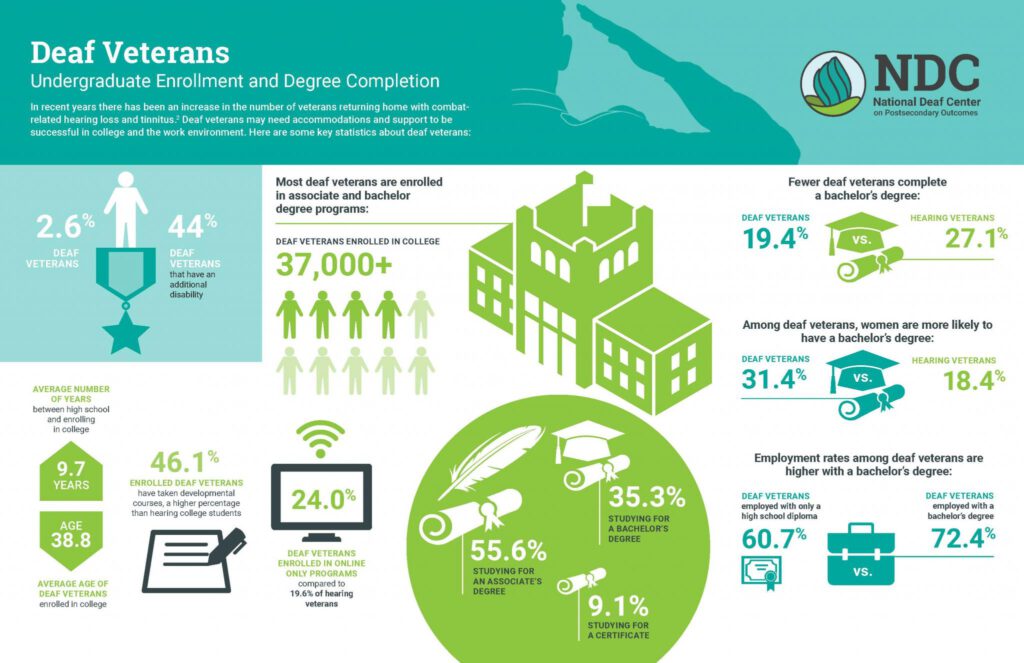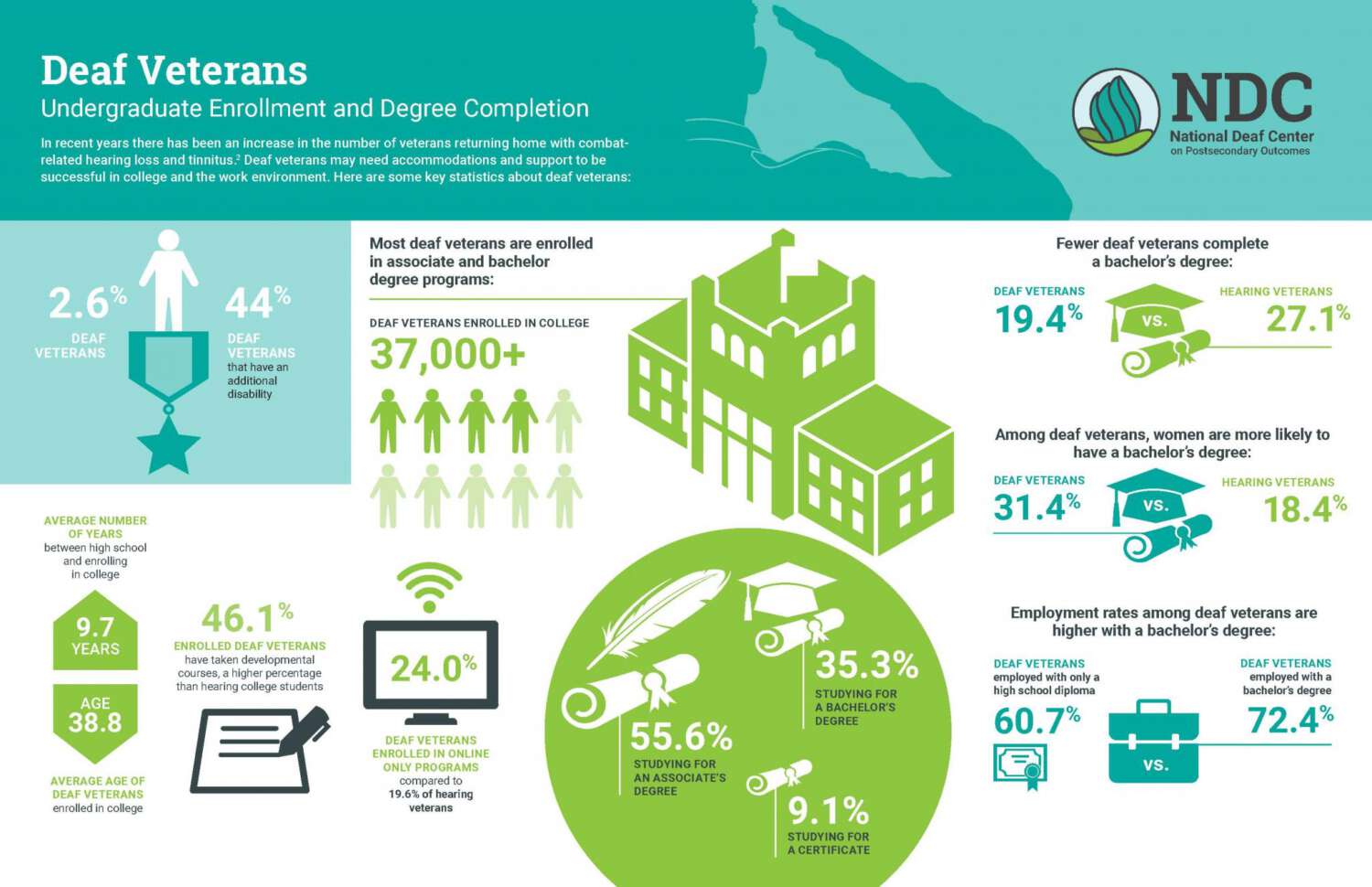Of the 1.6 million American veterans with combat-related disabilities, 4.2% report severe hearing difficulties. Deaf veterans may use different identifying terms such as late deafened, hearing impaired, hard of hearing, and more.1 Veterans who become deaf later in life and enroll in college will need to learn how to navigate postsecondary settings. These veterans often do not know about accommodations, resources, and tools available to them.
Colleges can support deaf veterans by:
- Collaborating with dedicated veteran liaisons on campus
- Reaching out to veteran advocacy and support groups
- Sharing information about available accommodations
All deaf students may need assistance exploring accommodation options, especially students who become deaf later in life. The disability services office can work closely with the campus veteran liaison to educate deaf veterans on the variety of accommodations available to them as well as the process for requesting auxiliary aids and services. The resources listed on the right may be helpful for professionals and deaf veterans.

Recommended Resources for Professionals
- Late-Deafened Individuals: Implications for Postsecondary Outcomes nationaldeafcenter-late-deafened-postsec (click here)
- Mental Health Care for Deaf Individuals: Needs, Risk Factors, and Access to Treatment nationaldeafcenter.org-mental-health-research (click here)
- Association of Higher Education and Disability (AHEAD) Veterans Special Interest Group ahead.org-about-ahead/about-overview-specialinterest-groups/veterans (click here)
Recommended Resources for Veterans
- Accommodations 101(click here)
- Heroes with Hearing Loss (click here)
- Hearing Center of Excellence (click here)
- Hearing Loss Association of America Veterans Chapter (click here)
- Association of Late-Deafened Adults alda.org/
- National Association of the Deaf nad.org-resources-american-sign-language-learningamerican-sign-language(click here)
1 NDC uses the term deaf in an all-inclusive manner, to include people who may identify as deaf, deafblind, deafdisabled, hard of hearing, late-deafened, and hearing impaired. NDC recognizes that for many people, identity is fluid and can change over time or with setting. NDC has chosen to use one term, deaf, with the goal of recognizing experiences that are shared by people from diverse deaf communities while also honoring their differences.
2 Theodoroff, S. M., Lewis, M. S., Folmer, R. L., Henry, J. A., & Carlson, K. F. (2015). Hearing impairment and tinnitus: Prevalence, risk factors, and outcomes in U.S. service members and veterans deployed to the Iraq and Afghanistan wars. Epidemiologic Reviews, 37(1), 71–85.
Veterans Benefits Administration. (2019). VBA Annual Benefits Report Fiscal Year 2018. Retrieved from: benefits.va.gov
Data for people ages 24-54 from the U.S. Census Bureau; American Community Survey, 2016 American Community Survey 5-Year Estimates.
Data for currently enrolled undergraduate students from the U.S. Department of Education; National Center for Education Statistics, 2015–2016 National Postsecondary Student Aid Study (NPSAS).






